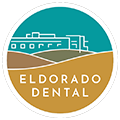Ezlase (Diode lasers) are being used to treat periodontal disease, apthous ulcers and herpetic lesions, and to desensitize teeth.
They are used at very low and safe power settings that allow us to remove diseased tissue while leaving healthy tissue alone, at the same time killing bacteria that cause disease and biostimulating the periodontal pocket.
Biostimulation at low power levels with a diode laser can increase circulation, collagen formation, and fibroblastic and osteoblastic activity. The laser actually allows us to kick-start the healing process at the bottom of the periodontal pocket -- a huge benefit over traditional therapies. The fact that the laser can remove diseased tissue, kill the bacteria that cause the disease, and stimulate healing, makes laser therapy a big advantage over traditional methods.


The ezlase 940 Wavelength


Ezlase (Diode lasers) are being used to treat periodontal disease, apthous ulcers and herpetic lesions, and to desensitize teeth.
They are used at very low and safe power settings that allow us to remove diseased tissue while leaving healthy tissue alone, at the same time killing bacteria that cause disease and biostimulating the periodontal pocket.
Biostimulation at low power levels with a diode laser can increase circulation, collagen formation, and fibroblastic and osteoblastic activity. The laser actually allows us to kick-start the healing process at the bottom of the periodontal pocket -- a huge benefit over traditional therapies. The fact that the laser can remove diseased tissue, kill the bacteria that cause the disease, and stimulate healing, makes laser therapy a big advantage over traditional methods.
What is Periodontal Disease?
Periodontal Disease is the #1 CAUSE OF TOOTH LOSS OVER the age of 35. It is defined as inflammation of the supporting tissue (gums, ligaments) that, if chronic and untreated, can lead to the loss of the tissues (bone, gums, and ligaments) that hold your teeth in place. It is caused by plaque, a sticky film of bacteria that forms constantly on teeth and can harden into TARTER if not removed frequently enough. There are also other risk factors and habits that can cause flare ups of the disease. The disease can be in an "active" state or a "maintained" state. Please ask your Dental Hygienist about your "Periodontal Health" at your cleaning appointments.
How long can you keep your teeth with periodontal disease?
Depending on the severity of the damage (loss of supporting tooth structures), when a patient is initially diagnosed with the disease it is usually in an "active" state. If the patient is compliant with treatment modalities and recommendations of their health care providers and dental care team members, they can keep their teeth FOREVER in most cases. Please discuss your personal case and risk factors with your Dental Hygienist regarding your individual disease and longevity for maintenance and homecare suggestions of your teeth.
How can you treat Periodontal Disease?
Periodontal Disease can be treated by complying with the initial treatment plan after your initial diagnoses, as well as the maintenance cleaning schedule you are given by your Dental Hygienist or Periodontist (Dentist specializing in Periodontal Disease). The Initial Treatment Plan may consist of scaling and root planing, periodontal surgeries, examination by a periodontist, specialized x-rays, orthodontic therapies, protective bite guards, elimination of habits, and REGULARLY SCHEDULED AND KEPT APPOINTMENTS WITH YOUR DENTAL HYGIENIST. Remember that you are an individual with unique habits, history, and oral health; you cannot compare your experience and treatment with other people you may encounter regarding their oral health. Every patient is unique and should be cared for and handled as such.
Is Periodontal Disease contagious?
Periodontal Disease is "contagious", YES! Primarily the type of bacteria that cause and worsen gum disease can be transferred from individual to individual in salivary transfers. The way the individual's body "reacts" to that bacteria is what matters in the destruction of the supporting tissue of the teeth.
Can Periodontal Disease be reversed?
ONCE A PATIENT LOSES BONE AROUND THE TOOTH, up until this point in time, data and research has shown that the bone lost will never regenerate on its own. However, there are surgical procedures done by specialists that can add bone with "grafting" to the sites if needed.
Please note, the soft tissues around the teeth (gums and ligament attachment) can, in fact, "heal" and become healthier and tighter following proper treatment and home care. When this happens the patient will experience less bleeding during brushing, flossing, and rinsing of teeth, as well as, in the office at routine dental cleanings.
Dedicated to Providing You With the Best Dental Care
Contact Us



